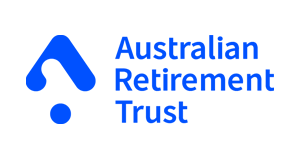Australian Retirement Trust: developing a Target Operating Model (TOM)

In early 2022, the Australian Retirement Trust (ART) was formed through the merger of Sunsuper and QSuper, creating one of Australia’s largest superannuation funds. ART engaged Right Lane Consulting (RLC) to co-develop a 2–5-year enduring Target Operating Model (TOM) that would clarify and drive cohesion to deliver the fund’s strategic intent.
Objectives:
RLC designed the TOM through a structured three phase approach: Diagnose, Design, and Deliver. We were then able to address key post-merger challenges, including:
- A lack of shared understanding of the TOM’s purpose and linkage to business activities
- Evolving strategic choices around ART’s differentiation
- Divergent approaches across legacy funds’ operating models
Phase 1: Diagnose strengths and challenges of current state organisation and define the TOM framework
RLC and ART formally kicked off the project, aligned scope, process, workplan, roles and deliverables. As part of the process, we co-developed a problem statement focusing on end-to-end TOM and embedding strategic and differentiating capabilities. We created a TOM framework defining role, purpose, breadth and depth, drawing on our strategy IP and sector best practices. We also conducted research and engaged leaders through interviews and focus groups. This clarified value creation, assessed current operating model strengths and challenges, and established a rationale for change.
Deliverables included a consolidated diagnosis pack outlining current-state issues and the benefits of a new TOM.
Phase 2: Design the principles and options for the TOM at the fund level by engaging key ART team members
During the design phase, a cross-functional TOM Working Group met in structured workshops to agree objectives, codify design principles and pinpoint distinctive capabilities that would set ART apart. During this process, capability gaps were mapped and several TOM options were drafted and stress tested. Once a preferred model emerged, eight domain specific, cross functional working groups were established, including representatives from both previous funds. This allowed us to build detailed people, process, system and sourcing choices, producing integrated domain level TOMs.
Throughout, Right Lane embedded change management thinking: it quantified impact, set thresholds for change resistance, and used iterative testing to keep resistance low. Deliverables included the refined TOM framework, benefit cases, and ready blueprints for every domain.
Phase 3: Outline the change plan to deliver the new operating model
The team reviewed, iterated and finalised the operating model, and drafted a high-level implementation roadmap that prioritised initiatives. We authored a compelling change narrative linking diagnose and design insights to purpose, benefits and intended impact. Right Lane produced a communication plan and capability packs to support executives cascade the change story and keep dialogue live.
We provided supporting change materials which also included behaviours and mindset shifts required to unlock the change. We also supplied reinforcement mechanisms to embed the change and a toolkit for ongoing review, giving ART the ability to refresh the TOM internally.
Outcomes:
Right Lane brought clarity, alignment, and momentum to ART’s future operating model.
We engaged over 80 ART managers and executives through a highly collaborative process that built deep buy-in and lasting capability. By defining a single, fund-wide Target Operating Model (TOM), we gave ART leaders a shared language and framework to drive change. We also developed practical tools that now enable ART to independently design and evolve their models. Our work mapped core, distinctive, and enabling capabilities — linking them to culture, ways of working, and business economics — to strengthen strategy execution and deliver better member outcomes.
With a clear implementation roadmap and concrete mobilisation steps, ART is now better equipped to compete and create long-term value for its members
If you are interested in getting help with developing a Target Operating Model, get in touch today.